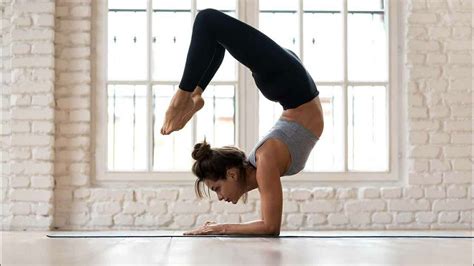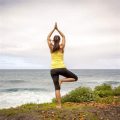Mastering 5 Challenging Yoga Poses: A Comprehensive Guide to Strength, Balance, and Flexibility
Yoga offers both physical and mental benefits, but certain poses test your strength, flexibility, and balance to the limit. Whether you’re an experienced yogi or someone looking to deepen your practice, mastering advanced poses is both rewarding and challenging. In this article, we’ll explore five tough yoga poses, break them down step-by-step, and provide the practical insights and strategies you need to overcome their unique challenges.
Introduction: Why Are Advanced Yoga Poses So Challenging?
Advanced yoga poses demand not only physical strength but also mental focus, proper breathing techniques, and a deep understanding of your body’s limits. These poses test your endurance, flexibility, and balance, offering a full-body workout. However, their benefits extend beyond the physical, as they also promote self-discipline, patience, and mental resilience.
While beginners may feel overwhelmed by these poses, breaking them down into manageable steps can transform your practice. The key is consistency, persistence, and building both physical and mental strength over time. In this guide, we’ll introduce five of the most challenging yoga poses, examine why they’re difficult, and provide techniques to master them.
Key Concepts in Advanced Yoga Practice
- Strength: Many advanced poses require significant upper body, core, and leg strength.
- Flexibility: Deep stretches, especially in the hips, hamstrings, and shoulders, are critical to achieving these postures.
- Balance: Holding complex poses often demands excellent balance, which develops over time with practice.
- Breath Control: Pranayama (breathing exercises) helps calm the mind, allowing for better focus and stamina in difficult poses.
- Mental Focus: Yoga is as much about the mind as the body, and maintaining mental clarity is crucial when holding challenging postures.
Historical Context of Advanced Yoga Poses
The origins of yoga date back over 5,000 years, rooted in Indian philosophy. Many of the poses considered advanced today were traditionally used as preparation for meditation. The focus was not on performing elaborate postures but rather on achieving balance between body, mind, and spirit. Over centuries, as yoga spread to the West, the emphasis shifted to physical practice, giving rise to modern challenges like arm balances and inversions.
Historically, challenging poses like Sirsasana (Headstand) and Pincha Mayurasana (Forearm Stand) were regarded as tests of a practitioner’s mastery over both the body and mind. Today, these advanced poses serve as milestones for yogis, demonstrating progress and encouraging deeper self-discipline.
The 5 Tough Yoga Poses to Master
1. Handstand (Adho Mukha Vrksasana)
The handstand is a classic inversion that tests your upper body strength and balance. It requires a strong core, stable shoulder alignment, and a great deal of patience to master.
- Why It’s Tough: Balancing upside down can be daunting. You need excellent shoulder stability and core engagement.
- Solution: Start by practicing against a wall to build confidence and muscle memory. Strengthen your shoulders and core through exercises like planks and dolphin poses.
- Common Mistake: Over-reliance on the arms instead of engaging the core.
2. Scorpion Pose (Vrschikasana)
Scorpion Pose combines a forearm balance with an intense backbend, demanding a high degree of flexibility and shoulder stability.
- Why It’s Tough: It requires both strength in the shoulders and deep back flexibility. It’s also easy to lose balance in this pose.
- Solution: Work on shoulder flexibility and core engagement in poses like Dolphin Pose and Forearm Stand (Pincha Mayurasana) before attempting Scorpion Pose.
- Common Mistake: Arching the back too quickly without proper warm-up, leading to strain.
3. Peacock Pose (Mayurasana)
This arm balance requires extreme wrist strength, shoulder stability, and core engagement as you balance your body on your forearms.
- Why It’s Tough: Balancing on your hands while keeping your body parallel to the ground is a significant challenge.
- Solution: Focus on wrist and core strength through exercises like wrist curls and planks. Practice leaning forward in Crow Pose to gradually build confidence.
- Common Mistake: Neglecting wrist and core preparation, leading to instability.
4. King Pigeon Pose (Eka Pada Rajakapotasana)
King Pigeon Pose is an advanced backbend that stretches the hips, quadriceps, and shoulders, requiring deep flexibility and focus.
- Why It’s Tough: Deep hip flexibility and shoulder mobility are essential for this pose.
- Solution: Start with more accessible pigeon variations and work on opening your hips and shoulders through preparatory poses like Low Lunge and Bridge Pose.
- Common Mistake: Forcing the backbend without adequate warm-up, risking injury.
5. Firefly Pose (Tittibhasana)
Firefly Pose is a challenging arm balance that requires exceptional core strength and hip flexibility.
- Why It’s Tough: Lifting your entire body while balancing on your arms demands both core and leg strength.
- Solution: Focus on hip-opening stretches and core exercises. Practice poses like Crow Pose and Lizard Pose to prepare.
- Common Mistake: Rushing into the balance without sufficient core strength or hip flexibility.
Current State Analysis: How These Poses Are Taught Today
Today, many yoga instructors use props like blocks, straps, and walls to help students safely approach advanced poses. Workshops focused specifically on inversions and arm balances are increasingly popular, as they provide a structured environment to learn safely. However, online tutorials often mislead practitioners into attempting advanced poses prematurely, leading to frustration or injury.
Practical Applications of Advanced Yoga Poses
Mastering difficult yoga poses offers benefits beyond physical achievement. These poses improve body awareness, build confidence, and cultivate mental discipline. In everyday life, the increased strength, flexibility, and balance gained from advanced yoga practice can enhance posture, alleviate back pain, and improve athletic performance.
Case Studies: Success Stories in Advanced Yoga Practice
| Case Study | Challenges Faced | Solutions Applied | Results |
|---|---|---|---|
| Jane, a 35-year-old beginner | Struggled with Handstand due to fear and weak shoulders | Practiced wall-assisted inversions and shoulder-strengthening exercises | Successfully held a free-standing handstand within 6 months |
| Mike, an intermediate practitioner | Lacked flexibility for King Pigeon Pose | Focused on hip-opening stretches and shoulder mobility drills | Achieved full expression of King Pigeon after 4 months of practice |
Stakeholder Analysis: Who Benefits from Mastering Advanced Yoga Poses?
Several groups benefit from mastering advanced yoga poses:
- Experienced Practitioners: Gain deeper body awareness and mental clarity.
- Yoga Teachers: Enhance their ability to guide students through challenging postures.
- Athletes: Improve flexibility and balance, which can translate to better performance in sports.
- Beginners: Although they may not attempt advanced poses immediately, understanding their progressions can set realistic goals.
Implementation Guidelines: How to Safely Approach Tough Yoga Poses
- Warm-Up Thoroughly: Ensure your body is fully warmed up with dynamic stretches before attempting any challenging poses.
- Use Props: Yoga blocks, straps, and walls are excellent tools for modifying poses and preventing injury.
- Break Down Poses: Focus on mastering individual components of a pose before attempting the full expression.
- Listen to Your Body: Avoid pushing beyond your limits, and respect your body’s boundaries to prevent injury.
Ethical Considerations: Avoiding Injury and Promoting Mindfulness
One of the core tenets of yoga is ahimsa (non-violence), which applies not only to others but also to yourself. In the context of advanced yoga poses, this means respecting your body’s limitations and avoiding the temptation to push through pain. Injuries can set back your progress and diminish the benefits of your practice.
Limitations and Future Research
While this guide offers strategies for mastering advanced yoga poses, there are limitations. Individual differences in anatomy and flexibility mean that some poses may always be out of reach for certain practitioners. Future research could explore more accessible variations or alternative poses that offer similar benefits without requiring extreme strength or flexibility.
Additionally, there is ongoing debate about whether advanced poses offer benefits beyond those available through less strenuous poses. Some experts argue that the physical strain of these postures may not be necessary to achieve yoga’s mental and spiritual benefits.
Expert Commentary on Challenging Yoga Poses
Advanced yoga poses are a testament to the connection between the mind and body. According to seasoned yoga instructors, the journey toward mastering these poses is more important than the destination. They emphasize that patience, mindfulness, and consistent practice are the keys to success, and that forcing progress often leads to setbacks.
For those willing to dedicate the time and effort, mastering tough yoga poses can be one of the most rewarding aspects of a yoga practice, offering profound physical and mental growth.








